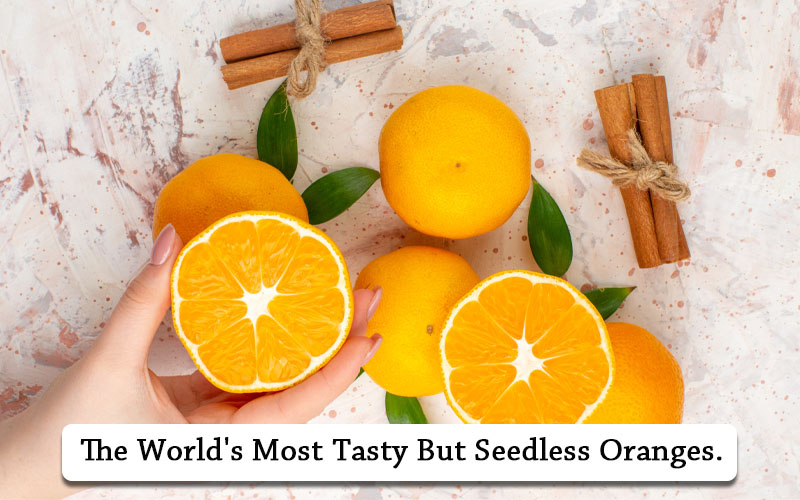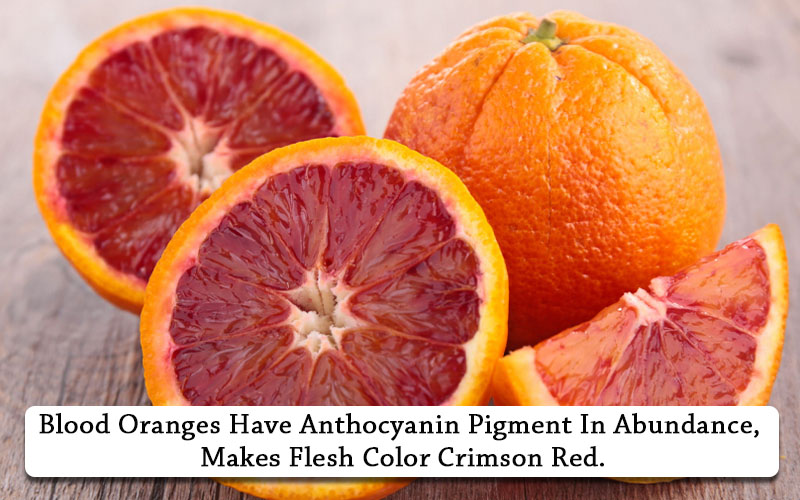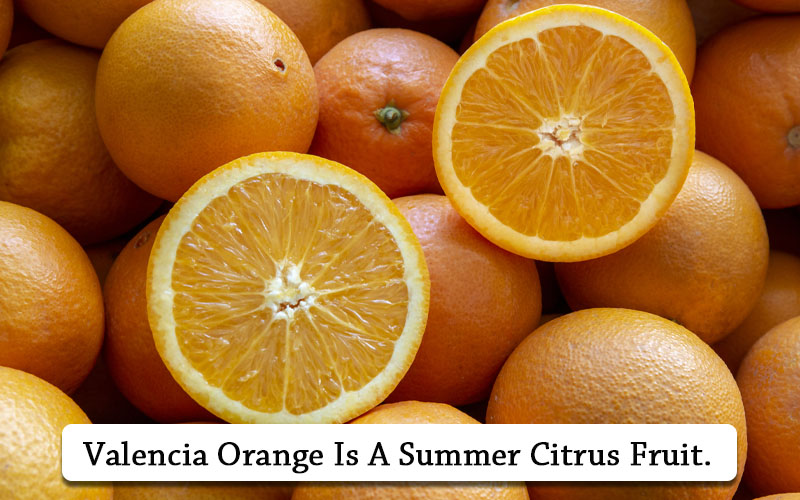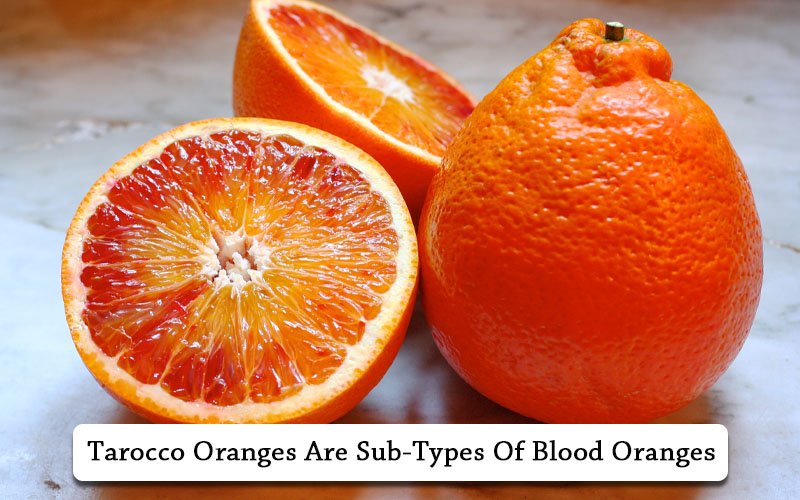All types of oranges are great! Thanks to vital enzymes inside the fruit.
They are thumped with benefits that regulate health and improve people’s overall beauty and personality.
Originating from China, the oranges now are one of the largest cultivated fruits globally and found everywhere in the world as the best winter-blessing.
Due to traveling worldwide and bearing different cultivation techniques, the fruit now has many types, all slurped in different palates.
Do you wish to know them? Here are the details:
Table of Contents
How Many Types Of Oranges Are There?
Astonishingly, there are 400 orange varieties available, belonging to pure or hybrid species, like navel oranges, Valencia oranges, blood oranges, etc.
Even some look-alike orange citruses are also available. The blog will let you know everything you need to know about winter blessing orange fruit.
Tasty Types Of Oranges pictures and necessary information you must eat once in your life:
Sweet Oranges Varieties:
Sweet oranges, don’t be misled by the name; these are sweety yet tangy, making the best citrusy flavor for winters.
The sharp flavor is lighter than other orange varieties as the amount of acid is less in sweet oranges than the other types.
Characteristics:
Here are some identifying characteristics of sweet orange varieties:
- Grow: On trees
- Produce: Fragrant flowers
- Shape: Round
- Pulp Color: Orange
- Pulp Taste: Acidulous & sweet
Types of Sweet Oranges:
Sweet orange is further divided into different types, based on its origin and other features. Here we are discussing some of the famous yet tastiest ones:
1. Navel Oranges:

On an orange tree, twin fruits grow on a single stem where one gets riper while the other remains underdeveloped, giving its brother a bump like human navel on the body.
That’s why we call them navel oranges:
- Grow: On trees
- Produce: Ornamental Flowers
- Shape: Ovate to oblong with navel like mark
- Pulp Color: Orange and seedless
- Pulp Taste: Sweet
Navel oranges are considered best for import and export because of their thick and hardy peel.
The navel oranges are produced in many parts of the world, especially America, while each type slightly varies in taste.
Some famous types of navel oranges you can find are California Navel, Dream navel, Late navel, Caracara, and Bahia. California navel is also called Washington Navel.
Navel Orange Uses:
- Fruit salads
- Juice consumption
- Raw eating
Tip: Don’t put your fruit into a juicer as it can ruin the sweet and rare taste. Rather use instant infusion bottles to get the juicing done.
2. Blood Orange:

The peel is orange, as of course, it is an orange, while the flesh or pulp inside the fruit is dark crimson, resembling the color of the blood.
- Grow: On citrus trees with warm temperate
- Produce: White or Pink sweetly fragrant flowers
- Shape: Round to oblong
- Pulp Color: Crimson, dark red,
- Pulp Taste: Non-acidic Sweet
Anthocyanin is the pigment that makes the color crimson red in blood oranges. It is rare to be found in citrus fruits but common among flowers and other summer fruits.
The best ingredient in Blood oranges is Chrysanthemum, known to treat chronic diseases, to mild headaches and inflammation.
The most common types of blood oranges you find are Tarocco, Sanguinello, Maltese, Washington sanguine, and ruby blood.
Blood Orange Uses:
- Making marmalades
- Baking
- Salads
- Chinese drinks
Information: Blood orange is a hybrid between Pomelo and Tangerine.
3. Valencia Orange:

Valencia is the most different type of oranges and one of the best-considered varieties of sweet oranges. A fun fact about Valencia Orange is that it is summer citrus, grows from July to October.
- Grow: on evergreen trees
- Produce: White sweet fragrant flowers
- Shape: Round to Oval
- Pulp Color: Yellow-orange
- Pulp Taste: Extremely juicy, Sweet-tart flavor
The rind of Valencia oranges can sometimes be green due to a different cultivation technique. However, that doesn’t mean the fruit isn’t ripened yet.
The green pigment can be due to chlorophyll content, and it doesn’t affect the fruit’s taste in any way.
Valencia Orange further comes in different kinds, and some of its famous varieties are Midknight, Campbell, and Delta.
Valencia Orange Uses:
- Marinades
- Cocktails
- Desserts
- Sauces and chutneys
- Citrus sprays for taste
Valencia oranges syrups of juices stay fresh for a longer time than navel oranges and can be used in 2 to 3 days of making.
Pro Tip: Valencia oranges though contain very few seeds; however, they are very tarty and are recommended to remove if you are blending juices.
4. Jaffa orange:

Jaffa is the Palestinian orange, but due to affliction between nations, Jaffa orange production has been highly affected.
Once being the most famous export of Palestine, there are hardly any Jaffa oranges available today. The demand is still high, but the agricultural and political mishaps have affected the supply significantly.
Can you get jaffa oranges still?
Yes, but it is too difficult because no exporters of the fruit are available so far easily. Many online stores are claiming they have Jaffa orange in supply.
However, they may or may not be the actual Jaffa oranges of Palestine.
Small Oranges:
Small oranges AKA Cuties, are the most popular orange types in the world. The common names for tiny oranges in the USA are Clementines, cuties, and sweeties, etc.
Being the smallest in size, people can carry them anywhere and can eat raw by hands.
Small oranges come in the following varieties:
5. Clementine:

Technically clementine fruits aren’t really oranges, but a variety of citrus; you can call them cousin brothers of purebred sweet oranges because they are obtained by marriage between Sweet Orange (Valencia or Navel) and mandarin.
- Grow: On Warm trees
- Produce: Blooms turn into fruit
- Shape: Oval with a flat spot on the bottom
- Pulp Color: Shade of yellow
- Pulp Taste: Extremely juicy, Sweet-tart flavor
The tiniest size, sweetest slurp, and seedless texture of Clementine make them one of the most popular citrus varieties among children.
They come in both seedless and seed-full varieties. Also, the peel is very thin on the skin, and you can simply use your hands or nails to peel it up—no more need for cutting tools.
Clementine Orange Uses:
Eaten raw to:
- Normalize cardiovascular disorders
- Stabilizes the blood pressure
- helps hypertension
6. Tangerine:

As tangerine fruits aren’t directly oranges. Temple oranges are known to be the most miniature orange types, coming with fewer seeds. The growing season of this orange is the longest, from January through May.
- Grow: Evergreen trees
- Produce: Small white flowers
- Shape: round to oblong with a mark on the upper side
- Pulp Color: Magenta
- Pulp Taste: Sour-sweet and full-flavored
Although tangerines aren’t oranges, people do treat them like so. They are sweetly soured however less acidic than other types of oranges.
These are also easy to peel; however, if we compare Tangerine VS other seedless citruses, its popularity in children gets faded because of the seeds.
7. Bergamot Orange:

Bergamot Orange is one of the varieties of small oranges that’s not orange in color. Yes, this tiny citrus is green to yellow, similar to the color of the lime.
- Grow: On trees
- Produce: No blooms
- Shape: Pear-shaped
- Pulp Color: Green to Yellow
- Pulp Taste: Tangy, Sour, acidic
The unique sour and bitter flavor enriched Bergamot oranges are known to be hybrid, obtained by crossing lime and bitter orange.
They are very bitter tastewise and hard to be eaten raw. However, the use of this small citrusy orange is prevalent among food makers and food lovers.
Bergamot Orange Uses:
- Juices
- Zest
- Cookies
- Desserts
8. Cara Care Navel:

Cara Cara navel is a sub-type or sub-specie of Navel orange, as we discussed above. It has characteristics of Navel orange and blood orange together under one package.
- Grow: Washington navel orange tree with bud mutation
- Produce: Ornamental Flowers
- Shape: orange with navel
- Pulp Color: Luscious pink
- Pulp Taste: Sweeter, Slightly tangy, and less acidic,
When you search for seedless orange types, Cara Cara makes the best option for it because these elegant and beautiful looking oranges have appreciating pulp color to be used in kinds of salads and desserts.
Types of Seedless Oranges:
Seedless oranges are gifts for kids as well as old age people who don’t like the mess of stones in their mouth while enjoying winter treats.
Astonishingly, mother earth and nature has blessed us with seedless varieties of oranges. The best types of seedless oranges are:
- Navel oranges
- Valencia Oranges
- Jaffa oranges (aren’t available now)
9. Tarocco Orange:

Tarocco oranges are sub-types of blood oranges because they also have magenta-colored flesh. The main thing they are famous for is their seedless, pollen-free pulp.
- Grow: Trees in Italy
- Produce: Ornamental Flowers
- Shape: Globular to round shape
- Size: 7-10 CM
- Pulp Color: Ruby red, Magenta
- Pulp Taste: sweet with only 12% acid content
Like all other oranges, they are incredibly beneficial for the skin because of the rich vitamin C content. They are native and highly popular in Italy but are loved and found all over the world.
Its taste is slightly different because of the high content of anthocyanins that makes the pulp color darker than the rest of the orange types. It has a little raspberry-like taste, along with being very sweet.
Tarocco Orange Uses:
- Marmalades
- Number of zests
Seedlessness in the Tarocco or navel oranges isn’t a matter of nature, but it is done using special genetic mutation techniques. Seedless oranges are propagated asexually by grafting.
- Clementines oranges:
Clementine oranges are semi-seedless varieties of oranges. They are typically found without seeds; however, they also come with seeds, but it happens rarely.
10. Mandarin orange:

Mandarin isn’t directly an orange but a citrus fruit that closely resembles oranges and is often regarded and used as such fruit. It has an orangish color rind, comes with seeds, and contains acidic, sweet flesh.
- Grow: Trees with grafted rootstocks
- Produce: White Flowers
- Shape: round with little flatter from bottom
- Pulp Color: Fresh orange
- Pulp Taste: Sweet or sour
Mandarin oranges are usually smaller in size and can have seedless flesh to pulp with some seeds. Their skin is loose on the flesh that makes them easy to peel without any tool. Even kids can do so.
Uses of Mandarin Oranges:
- Desserts
- Snacks
What are the different types of oranges?
Oranges are divided into various types based on:
- The place they are cultivated in such as types of oranges in Florida,
- Their texture such as types of blood oranges
- Their size, such as types of small oranges
- & some unique characteristics, such as types of seedless navel oranges
Bottom Line:
Are we missing any types of oranges you have in mind? Suggest us, and we will add those varieties in our blog. Together we can make the information authentic.

